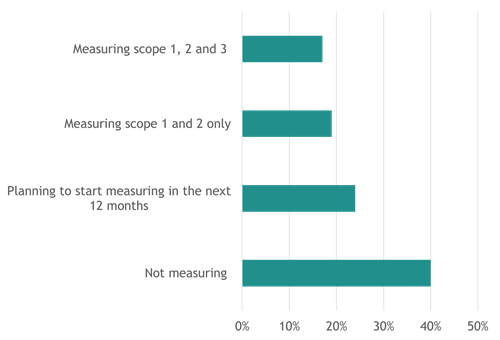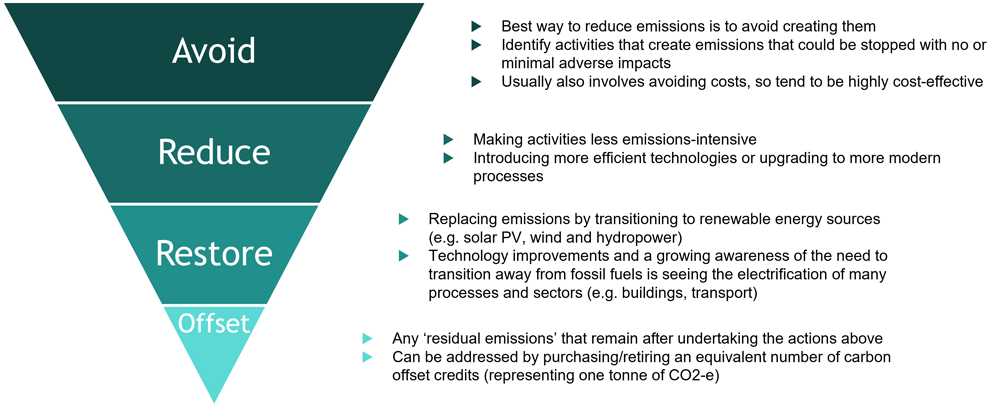In our 2023 sustainability webinar series, BDO expert Aletta Boshoff explores some of the popular sustainability standards, goals and frameworks, while sharing insights to help organisations on their sustainability journey. Here, we highlight the key themes from our latest event - Addressing your business’s carbon footprint.
2023 is set to be the year the sustainability spotlight is firmly turned towards Australian business. With increased reporting regulations, a rise in ethical consumerism and the transformative power of green finance, the business case for sustainability has never been more significant.
Establishing a carbon footprint
An essential step in sustainability reporting is establishing your organisation’s carbon footprint. The Greenhouse Gas Protocol (GHG Protocol) is used by many organisations trying to calculate their emissions. The GHG Protocol is framework agnostic, meaning whichever of the many current reporting frameworks you decide is best for your organisation and its stakeholders, it will likely require you to measure according to the GHG Protocol.
The GHG Protocol is designed to provide consistency and transparency. It also ensures five key principles are driving all calculations: relevance, completeness, transparency, consistency, and accuracy. A helpful global BDO publication is now available to assist you in working with the GHG Protocol and measuring your Scope 1, 2 and 3 emissions.
Categorising greenhouse gas emissions
Greenhouse gas emissions are categorised in terms of ‘scope’, which enables you to measure and report on these at different levels.
- Scope 1 emissions are direct GHG emissions that occur from sources owned or controlled by the company.
- Scope 2 emissions are indirect GHG emissions resulting from the generation of purchased energy (typically electricity) consumed by the company.
- Scope 3 emissions are indirect GHG emissions that exist both upstream and downstream within your supply and value chains. They are a consequence of the company's activities but occur from sources not owned or controlled by the company.
A poll during our live webinar showed 40% of respondents are not measuring carbon emissions. Encouragingly, over a third of respondents are measuring their footprint in some capacity, with 19% measuring Scope 1 and 2 emissions only and 17% measuring Scopes 1, 2 and 3 emissions. The remaining quarter of respondents expect to start measuring in the next 12 months.
Are you measuring your organisation's carbon emissions?

Graph: Poll results from live webinar on 15 February 2023
Collecting relevant data for the carbon footprint
Stakeholder management
An important part of collecting the data needed requires reliance on different data owners inside and outside the organisation. For example, external stakeholders, like building managers, may be able to supply the information you need regarding what has come in and out of the building and what is attributable to the occupied floor space within the building from an energy and emissions perspective. Corporate travel agents can typically provide detailed breakdowns of all the emissions involved in business travel.
Internally, procurement teams should be able to supply critical data when it comes to purchased goods. At the same time, facilities managers might have information on waste management, and people and culture on working arrangements and preferences.
Some data sets you may need to consider mapping relevant stakeholders for include:
- Buildings and facilities
- Purchased goods
- Travel
- Transport
- Working from home and commuting
- Headcount.
Whether you’re talking to internal or external stakeholders, the data collection process isn’t always as easy as it sounds. It can be time-consuming, and complexity can increase, for example, with a greater number of locations or sophistication of facilities.
Suitability of available data
The existing systems within your organisation might provide access to some information, but it may not provide a complete picture that’s fit for the purpose of calculating a carbon footprint accurately.
Consider what you already know, and where do you need to make informed estimates? Transport is a classic example here. You may not have the depth of information to accurately calculate transport emissions, but using estimates based on the information at hand is often better than simply doing nothing.
Primary data is ideal as it enables your business to make more accurate calculations. Continuing with the transport example, primary data would provide the consumption in litres of fuel used for business purposes. However, primary data can be difficult to obtain, and you may find you need to use secondary data, using the mileage and car size to calculate a footprint. Finally, tertiary data may be the only option available to your business. In this example, tertiary data might be the industry average of milage used by company cars.
Suppose your business does not have the required data. In that case, this process could prompt thinking about what needs to be measured and what changes your organisation may need to implement to its systems to better capture the relevant data for subsequent years.
Challenges and considerations in practice
Even for a business like BDO that doesn’t move manufactured goods around, the process of a carbon calculation can get complicated - particularly when it comes to Scope 3 emissions.
For example, the first challenge BDO in Australia faced when measuring its carbon footprint was the variance in the size of buildings occupied and the sophistication of data capture. Water usage, waste management, air conditioning and refrigeration processes all need to be counted.
Every substance has a different global warming potential, and every substance's ability to warm the planet is compared to CO₂ in its ability to warm the planet.
Calculating fugitive emissions is often a blind spot in calculating a business’s carbon footprint. Fugitive emissions are those that have escaped an attempt to capture them with a hood, seal or any other means. Refrigerants are an example of fugitive emissions, and can be found in air conditioning units, fridges and pumps. They have a disproportionately high impact on a carbon footprint and need to be considered.
Some of the challenges and opportunities to think about include:
- Reporting on past periods – this can be difficult as it can be hard to go back to locate and collate this information but it may be useful for setting a baseline or measuring year-on-year change
- System availability - consider what systems the organisation has in place and what data needs to be held for the calculations to be accurate
- Integrity of data - understanding the quality of the data you’re receiving
- Sophistication of data – look to utilise external sources that hold the required knowledge for your organisation.
Creating an emissions reduction strategy
Once you’ve established your baseline and you’ve got the numbers (even though they may not be perfect), how does your business go about reducing its carbon footprint? What approach will you take?
The carbon mitigation hierarchy of avoid, reduce, restore and offset can help to review and prioritise the greatest areas for emission reductions.
Carbon mitigation hierarchy
A common approach a carbon reduction strategy starts by identifying the bigger buckets of emissions and looking at the ease with which you can start to reduce these. This may well depend on the regulatory environment in which you operate.
We’re here to help
Addressing your carbon footprint is an important component of your sustainability report. It is a journey of continual improvement, but the most important thing is to make a start.
Our National Sustainability Services team has extensive experience in sustainability across Australia. Contact us to find out how we can assist your business in addressing your carbon footprint.
Sustainability and ESG webinar series
BDO is pleased to bring you our sustainability and ESG webinar series.
